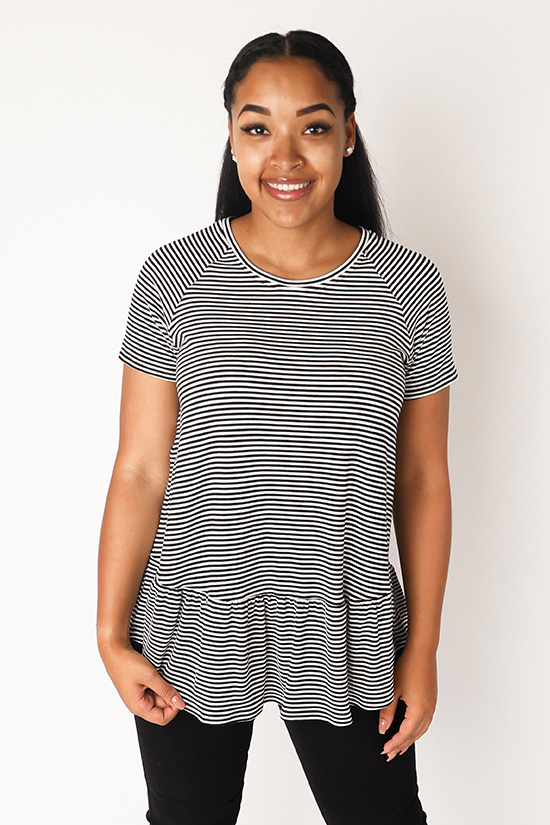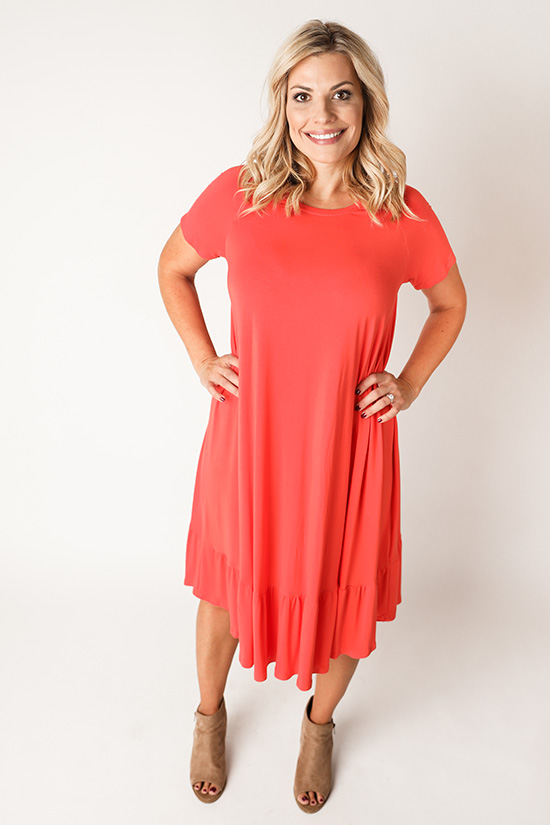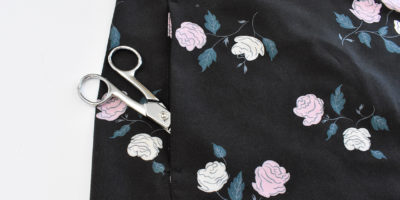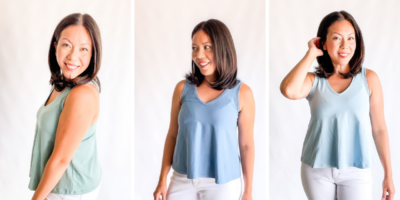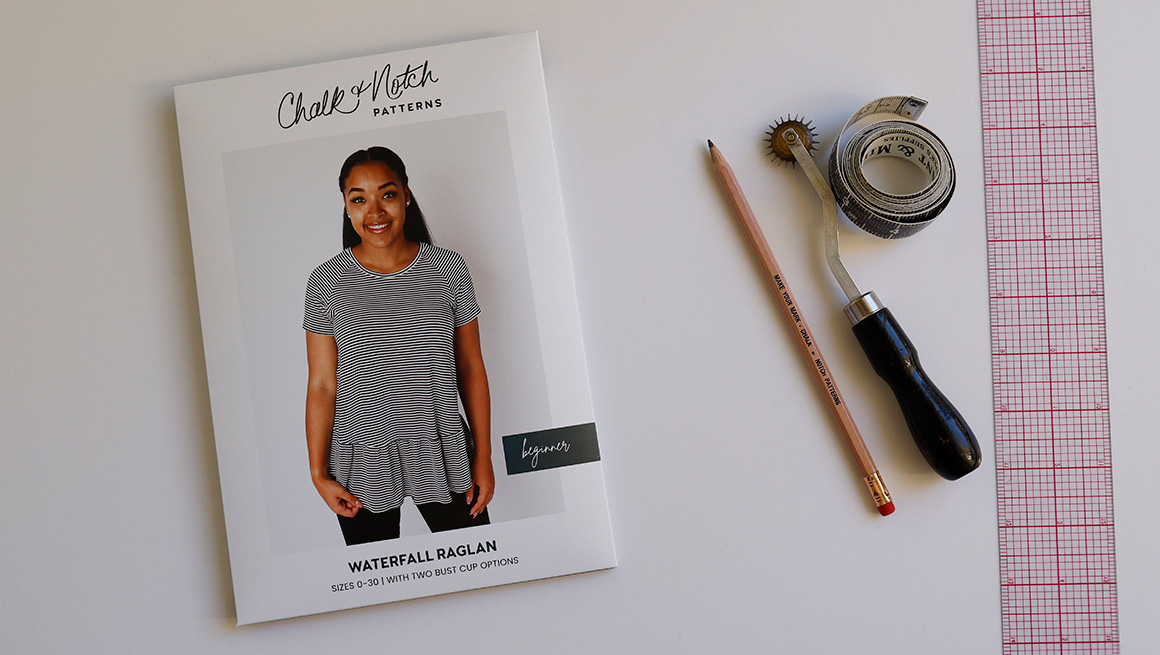
We want to make sure you have success when sewing Chalk and Notch patterns and it’s very common to need some sort of custom adjustment. In order to make sure you have help fitting your Waterfall, we have put together this post covering the most common fitting adjustments for the Waterfall Top and Dress. We have been working to have fitting posts for all of our patterns, you can find our fitting and custom adjustments library here.
Please check out our Waterfall Tester Inspiration post here if you’re interested in seeing the Waterfall on a variety of body types. During testing, we work through the fit for each tester, which helps inform what fitting and custom adjustments we talk about in our fitting posts. These adjustments are included in the pattern tutorials, but if more fit questions come up, we will continue to add them to the blog posts.
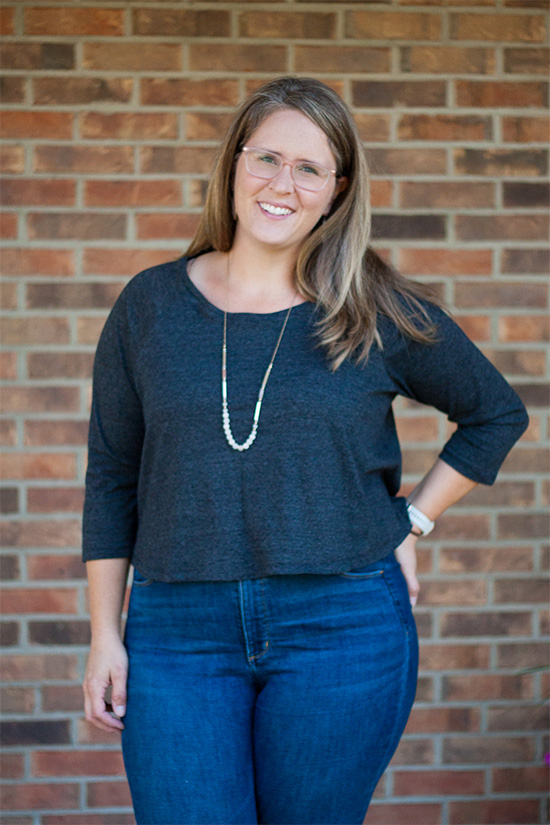
Before we get started, I always like to add a note that the goal should be to create a comfortable garment that you will enjoy wearing. I don’t think it’s important to get rid of every single drag line and pull, so be kind to yourself as you are analyzing your fit. If you have specific questions about fitting the Waterfall, you can always reach out in our Chalk and Notch Facebook Group or email us here.
First things first, make sure you have a copy of the Waterfall or the Mini Waterfall!
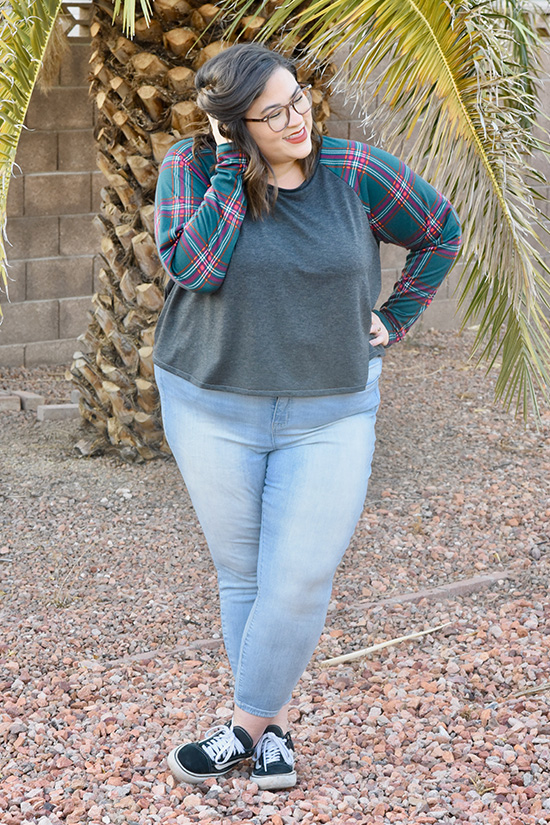
HOW TO PICK A SIZE
First, make sure you take new measurements before starting any project because our bodies change, and starting with accurate numbers is the first step to getting a good fit. When fitting the Waterfall, you will want your high bust and full bust body measurements. If you fall between sizes, size down. For the most part, the waist and hips are not going to inform your decision on which size to pick, but if you have concerns you can reference all the body measurements.
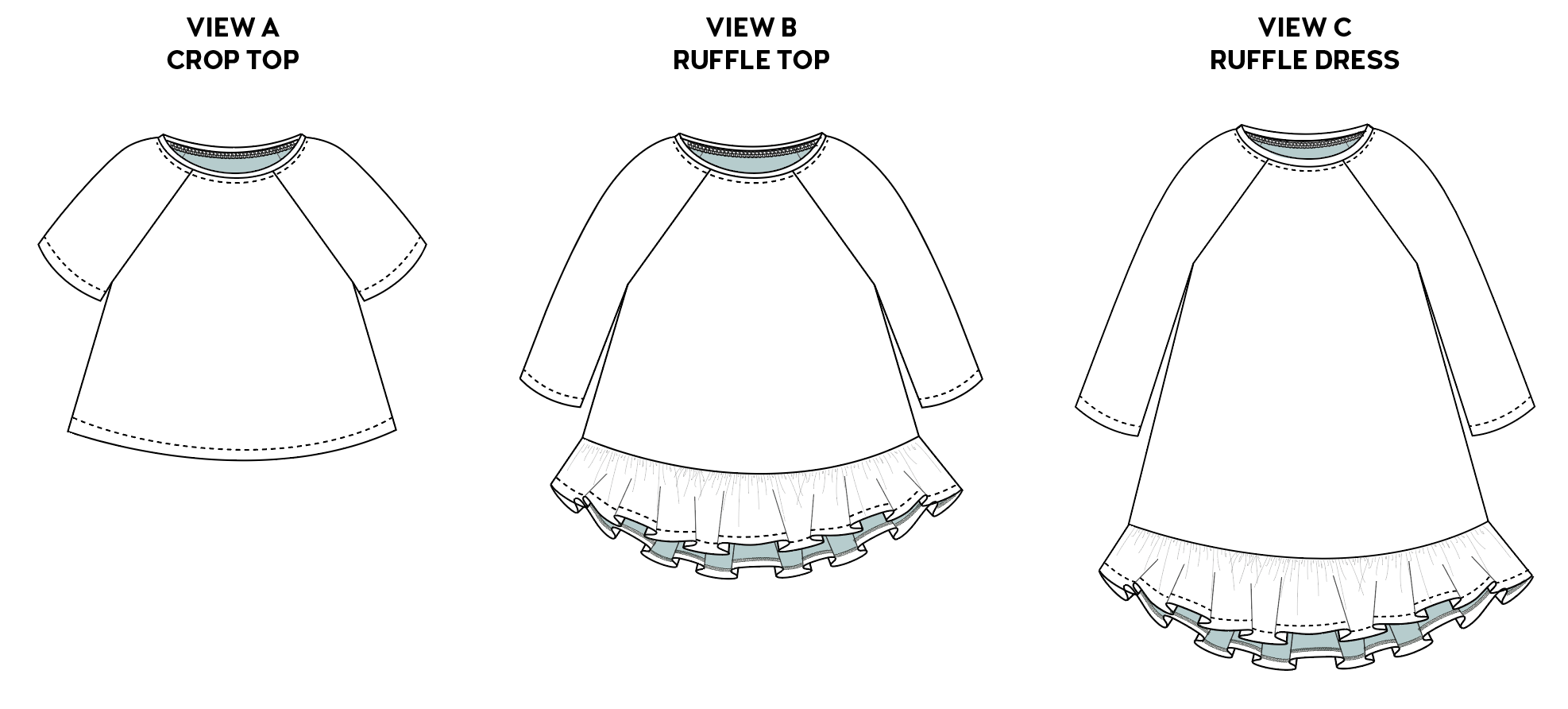
Cup Size
The cup size is determined by calculating the difference between the high bust and full bust. If the difference between the high bust and full bust is between 0” and 2” (5 cm), use the A/B cup. If the difference is between 2” (5 cm) and 4” (10 cm), use the C/D cup. If you have more than a 4” (10 cm) difference, you may need a full bust adjustment. More details on a full bust adjustment below.
Body Measurements
It is very common to fall across a few different sizes. After you determine what cup size to make, pick a size that works for your high bust and full bust. For the Waterfall, if you fall between sizes, size down. Due to the amount of ease included often people prefer to size down two sizes but the style is designed to be oversized. That’s the beauty of sewing, you can make adjustments based on your preference.
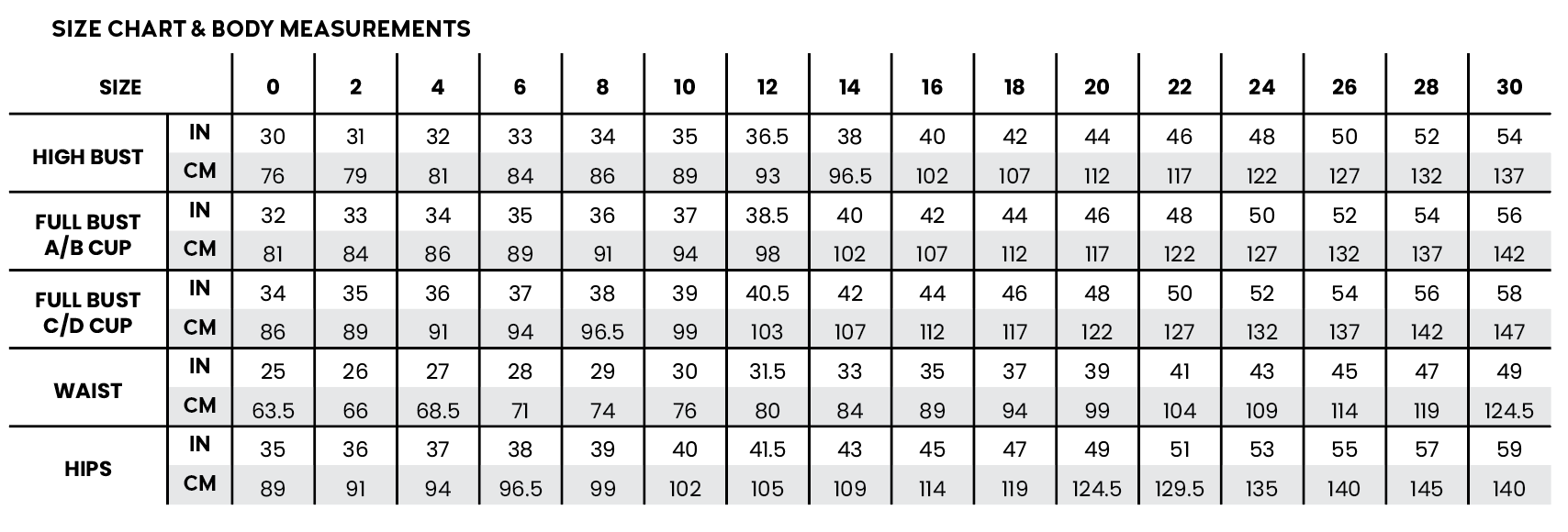
Finished Garment Measurements
This style is designed to have 6” (15 cm) of ease through the full bust. There is 20” (51 cm) of ease through the waist.
Once you determine your size, review the finished garment measurements to determine if you would like to adjust the length. For reference, the center back to hem measurement is taken from your back neck to the finished hem of the top or dress. It might be helpful to have someone help you take this measurement.
There are three views. The finished length of the crop top ends right below the waist (view A). The finished length of the ruffle top ends at the low hip (view B), and the finished length of the ruffle dress ends at mid-calf (view C). To find the finished length of the sleeves, measure from the side neck to the sleeve hem. Review the finished garment measurements to determine if you would like to adjust the length.
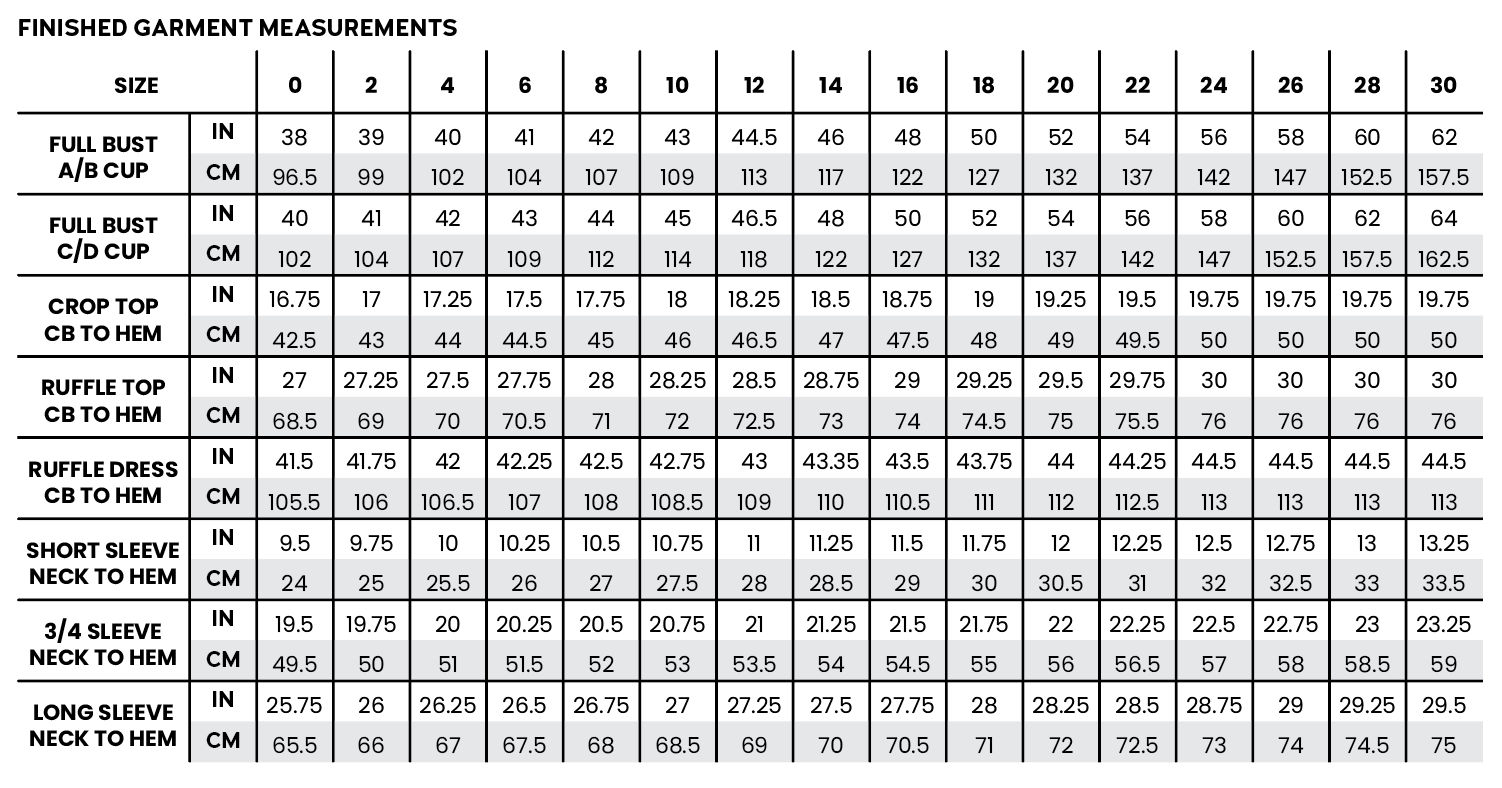
MAKING A MUSLIN
I will always advise you to make a muslin or toile (test garment) before cutting into your final fashion fabric. Fabric will affect fit, and you won’t get a feel for the real fit unless you sew it in a comparable knit fabric. A thicker knit will also stand away from the body and make the garment feel bigger. I prefer a lightweight drapey knit for the Waterfall for this reason.
CUSTOM ADJUSTMENTS
Chalk and Notch patterns are designed for a height of around 5’7″ (174 cm), but all of the Chalk and Notch patterns are tested on a range of heights. Length is a personal preference and can be adjusted to suit your preference. For reference, I am 5′ 1″ (155 cm) and I make the following length adjustments. I remove 1.5″ (4 cm) from the Cropped and Top views, and 3″ (7.5 cm) from the Dress. As a reminder, everyone carries length in different places so measuring the pattern and your body is the best way to gauge if you need to adjust the length.
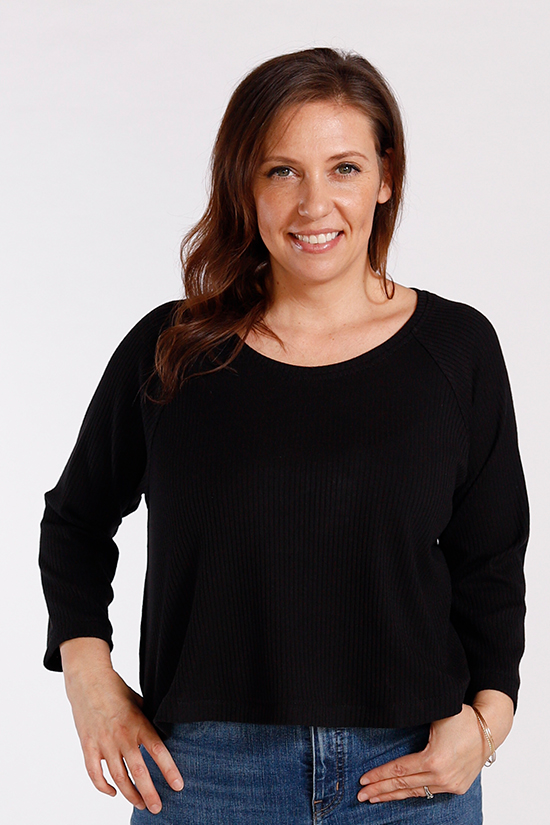
ADJUSTING THE BODICE LENGTH
To find the finished length, measure from the center back neck to the center back hem. The finished length of the crop top ends right below the waist (view A). The finished length of the ruffle top ends at the low hip (view B), and the finished length of the ruffle dress ends at mid-calf (view C). For the Crop Top view, it’s easiest to adjust the bodice length at the hem:
- If adding length, add paper and add the amount desired by extending the side seams and center front or center back (shown in solid red).
- If shortening, trim the hem (shown in dashed red).
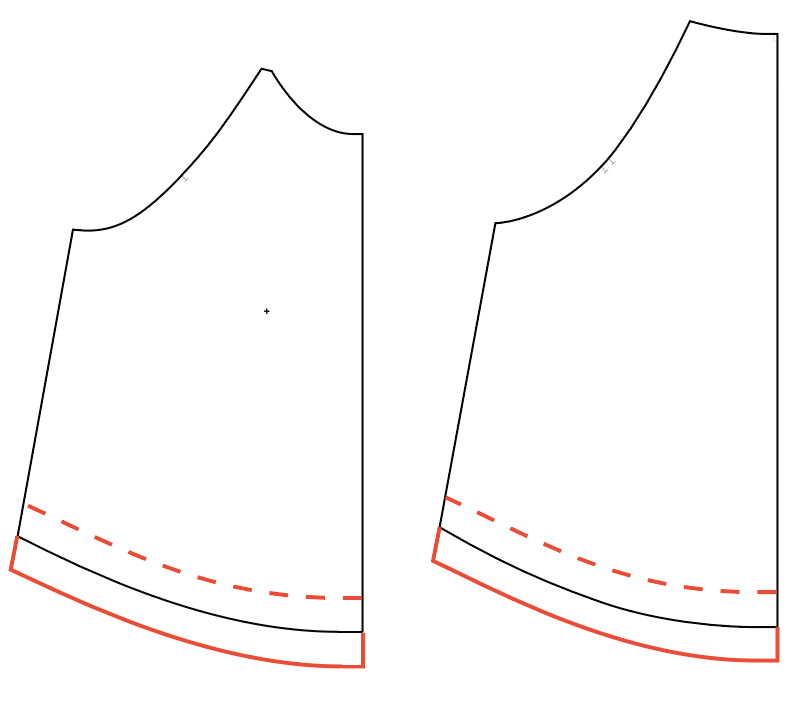
To adjust the bodice length for Views B & C:
- Cut the pattern horizontally at the indicated line. Shown in RED.
- If adding length, add paper and add the amount desired.
- If shortening, overlap at the cut line the amount desired.
- Re-draw the side seams.
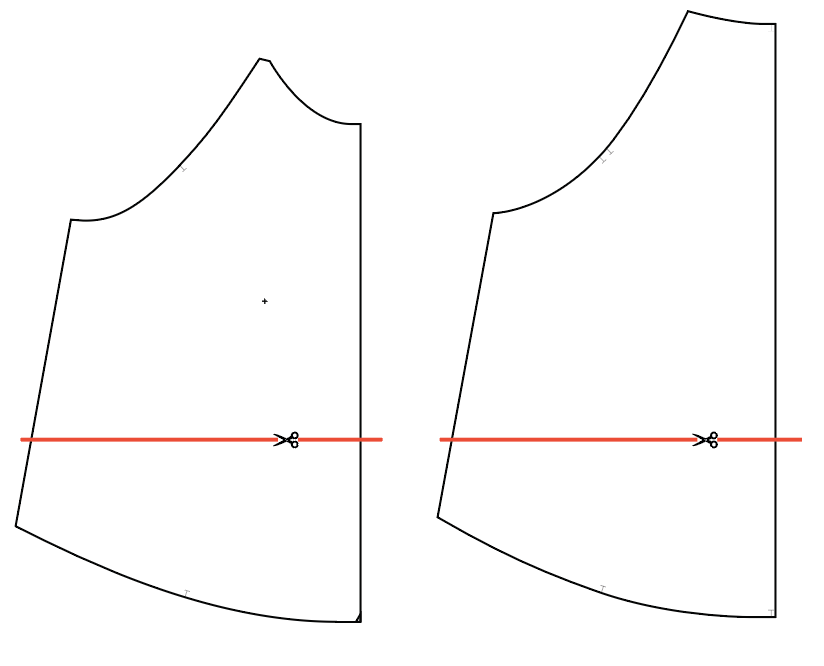
ADJUSTING THE SLEEVE LENGTH
To find the finished length of the sleeve, measure from the side neck to the sleeve hem. The short sleeve is designed to finish mid-bicep. The 3/4 sleeve is designed to finish mid-forearm and the long sleeve is designed to finish at the wrist. To adjust the length of the sleeve:
- Cut the pattern horizontally at the indicated line. Shown in RED.
- If adding length, add paper and add the amount desired.
- If shortening, overlap at the cut line the amount desired.
- Re-draw the side seams.
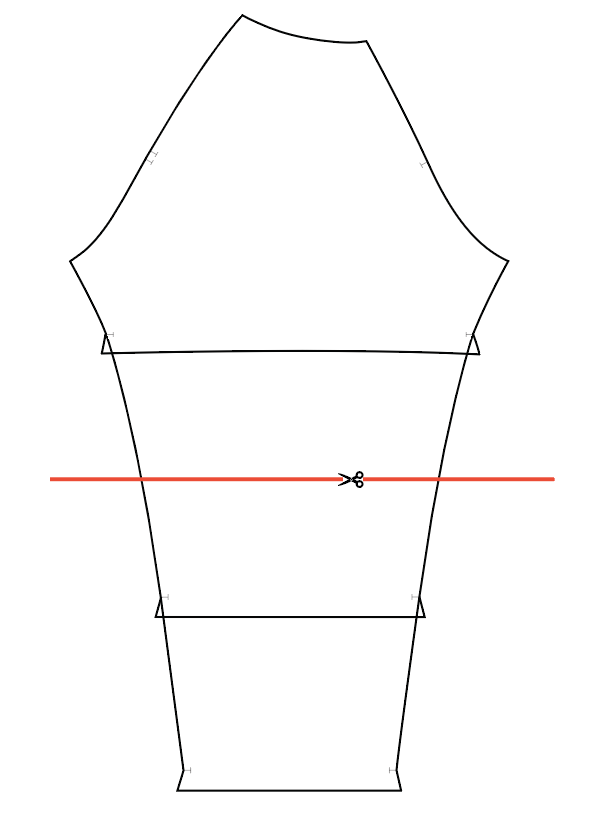
FULL BUST ADJUSTMENT
If you have over 4” (10 cm) between your high bust and full bust, you may need a Full Bust Adjustment. Use the C/D Cup Bodice.
- First decide how much more ease you need through your bust. Add half that amount to your pattern. If you need 1” (2.5 cm) then you will add 1/2” (1.25 cm) to the pattern.
- Cut from the waistline (#1) to the bust point (#2) then to the armhole (#3), not cutting all the way through at the armhole. Also cut from the center of the side seam (#4) to the bust point (#2) without cutting all the way through at the bust point. Lay this on top of a new piece of paper.
- Open the ease at the bust (#2), parallel to the hem (#1), shown in PINK. This will open ease at the points (#1 & #4), creating a longer side seam and added length through the center front. Tape this new shape down on the paper.
- Trace your new bodice piece, shown in RED, smoothing the side seam and hem. The center front hem will be longer and the side seam will have a slight curve.
- Place your back bodice pattern piece on top of the front bodice to measure the side seam length. Trim the excess length from the front bodice hem and mark the hem center notch.
- You have completed the FBA. For views B & C, adjust the ruffle.
- For the Ruffle Top & Dress you will measure your new front bodice hem and add width to your front ruffle pattern piece.
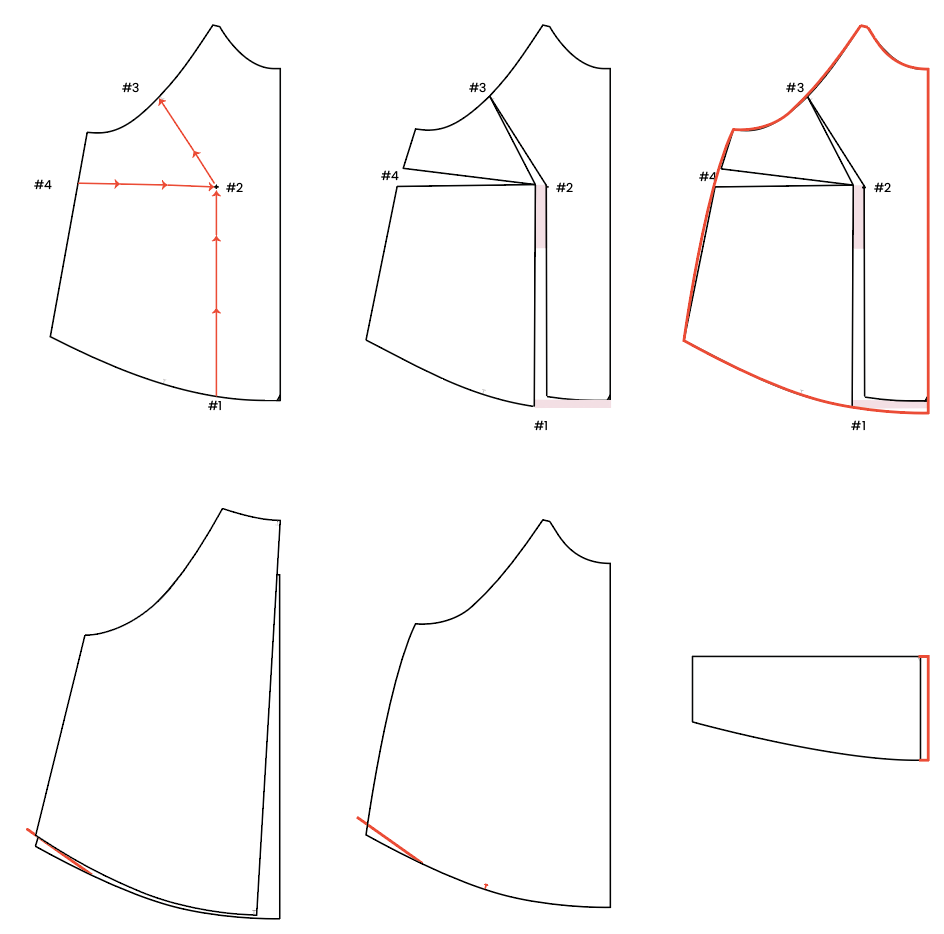
I hope this post helps explain how and when to do custom adjustments while fitting the Waterfall pattern. It’s totally worth the time to make a muslin, make any adjustments, and update your printed pattern. Remember to write down some notes for yourself so that when you come back to the pattern, you know what adjustments you have made. If you have any other fit questions, please let me know and I can update the post as needed.
Happy Sewing!
XO, Gabriela


